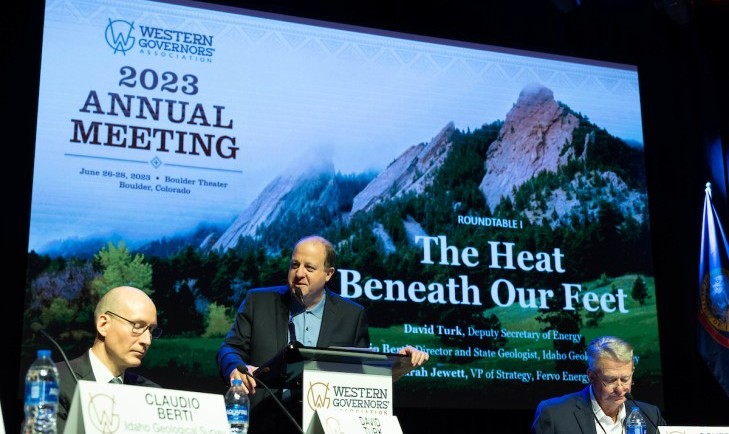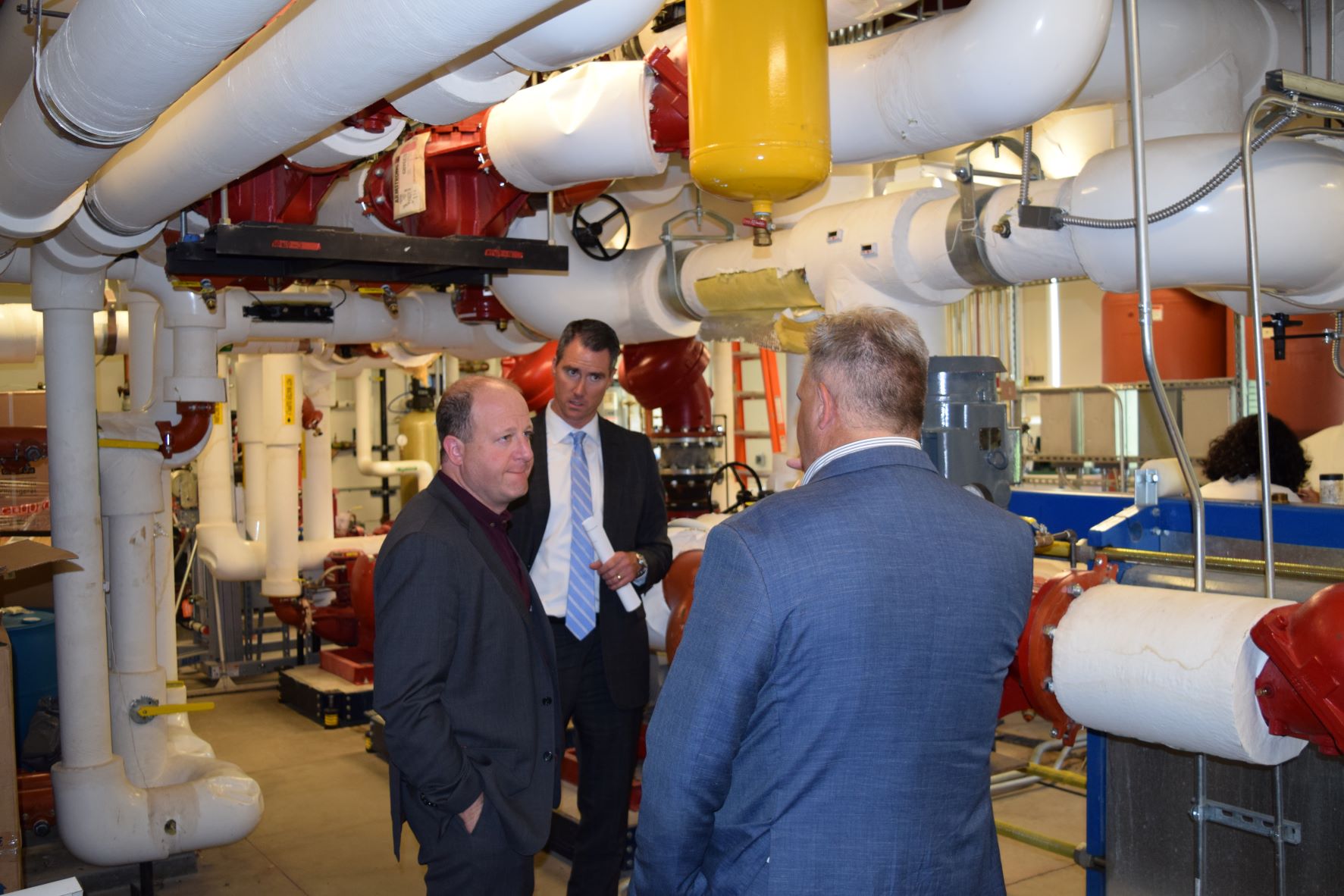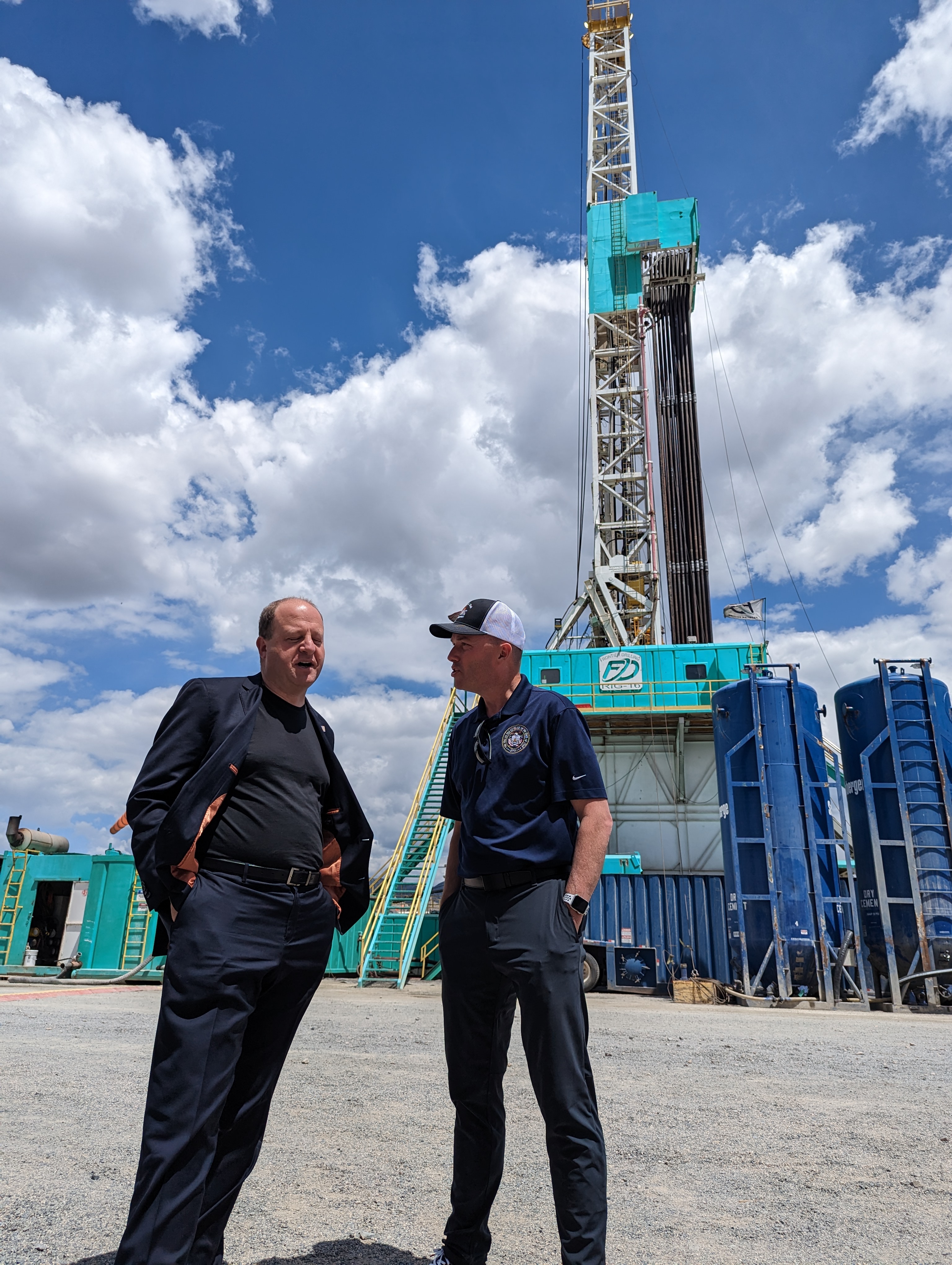08/08/24
Year in Review: The Heat Beneath Our Feet

It’s been just over a year since Colorado Governor Jared Polis released The Heat Beneath Our Feet initiative report and, thanks in part to Western Governors, the promise of geothermal energy has never been so evident.
_Page_01.jpg) In the past year, the geothermal energy sector has experienced transformative advancements, pushing the boundaries of what’s possible and solidifying its role in the future of renewable energy. From significant technological innovations to pioneering projects, the industry has made impressive strides that are setting the stage for a new era in sustainable energy.
In the past year, the geothermal energy sector has experienced transformative advancements, pushing the boundaries of what’s possible and solidifying its role in the future of renewable energy. From significant technological innovations to pioneering projects, the industry has made impressive strides that are setting the stage for a new era in sustainable energy.
Leading by example, Governor Polis instituted several incentives to promote the development of geothermal resources in Colorado, including tax credits for geothermal electricity generation and for those who install heat pumps to sustainably heat and cool buildings.
In April, The Colorado Energy Office (CEO) opened its first competitive application cycle for the state’s Geothermal Electricity Tax Credit Offering, which will provide $35 million in state investment tax credits. A production tax credit is also available for electricity production.
In May, CEO also announced $7.7 million in grant awards through the Geothermal Energy Grant Program, which will support 35 geothermal projects.
Geothermal Technologies, Inc. will use the $1 million it was awarded to develop a geothermal test well at the Longs Peak Dairy in Weld County. Once operational, it will generate 3 megawatts (MW) of clean electricity and more than 180 MW once the site reaches its full generation capacity.
The town of Vail will use its $250,000 grant to perform an ambient temperature loop sink and source evaluation study to help inform what a potential geothermal heating and cooling district could look like. The district would incorporate the Vail Public Library, the town’s wastewater treatment plant, Dobson Arena, and the Vail Village snowmelt systems.
With its $675,000 grant, the University of Colorado Boulder will conduct feasibility and design studies for two interrelated geothermal projects that will explore the co-generation of geothermal electricity and heat. These projects could enable on-site geothermal electricity production that co-generates heat for a thermal energy network connecting more than 12 million square feet of conditioned space across three CU Boulder Campuses.
Read more about all 35 projects funded through the Geothermal Energy Grant Program here.
Several other states have also ramped up their support for the development of geothermal resources, especially in regards to heat exchange systems like heat pumps, which offer a solution for sustainably regulating indoor temperatures, a process that, according to a report by the International Energy Agency, accounts for 30% of global energy use and 28% of global greenhouse gas emissions.

Miami University in Ohio also announced plans to expand its geothermal heating and cooling system. Once completed in 2026, the 520 geothermal wells on campus will extract geothermal energy to support the conversion of the North Chiller Plant from fossil-fuel-powered steam systems to a geothermal energy plant. This conversion will eliminate more than 5,810 metric tons of carbon dioxide equivalents in emissions annually and allow the university to access a reliable energy source capable of sustainably heating 43 buildings on campus.
The federal government also made significant investments in geothermal heat pumps this past year.
The Environmental Protection Agency recently awarded The Bill and Hillary Clinton National Airport with a $7.75 million grant to help fund a geothermal plant at the Little Rock airport. By replacing natural gas with geothermal technology for the airport’s heating, ventilation, and cooling systems, it anticipates cutting on-site greenhouse gas emissions by 90% and achieving approximately 20% in annual energy savings.
The U.S. Department of Energy (DOE) provided a Chicago-based non-profit, Blacks in Green (BIG), with a $747,000 grant to design a geothermal heating a cooling system for 180 homes in West Woodlawn neighborhood on the city's South Side. BIG estimates the project could save homeowners as much as 70% on their utility bills.
Even the U.S. Department of Defense has initiated exploratory geothermal projects to regulate the temperature at four installations in the United States.
“We are in an era of strategic competition with China, which means that our installations are no longer a sanctuary from the full spectrum of threats,” said Dr. Ravi Chaudhary, Assistant Secretary of the Air Force for Energy, Installations, and Environment. “We need to ruggedize our installations with redundant energy systems and make use of clean energy sources that reduce our fuel demands. Geothermal sources strengthen our energy grids and give us the ability to isolate threats before they impact our operations."
But while the ability to sustainably heat and cool buildings using the constant temperature of the Earth’s core is often seen as the low-hanging fruit of the geothermal world, significant progress was also made this year in using geothermal resources for electricity generation – the “holy grail of renewable energy,” as U.S. Secretary of Energy Jennifer Granholm said.
 Following a breakthrough at the Utah FORGE laboratory that proved the efficacy of enhanced geothermal systems, Southern California Edison, one of the largest power companies in the country, announced a deal to buy 320 megawatts of electricity from an enhanced geothermal plant that Fervo Energy is developing in southwest Utah. It marks the first power purchasing agreement between an electric utility and an enhanced geothermal company.
Following a breakthrough at the Utah FORGE laboratory that proved the efficacy of enhanced geothermal systems, Southern California Edison, one of the largest power companies in the country, announced a deal to buy 320 megawatts of electricity from an enhanced geothermal plant that Fervo Energy is developing in southwest Utah. It marks the first power purchasing agreement between an electric utility and an enhanced geothermal company.
Fervo Energy also made headlines earlier this year when Google agreed to buy 3.5 megawatts from its enhanced geothermal plant in Nevada to help power its data centers in the area.
In hopes of spurring similar projects throughout the country, the federal government continued to increase funding for geothermal research and development projects.
In February, DOE announced $60 million in grants for three enhanced geothermal system pilot projects in California, Utah, and Washington.
DOE also awarded a $165 million "Geothermal Energy from Oil and Gas Demonstrated Engineering" grant to a consortium formed by Project Innerspace, the Society of Petroleum Engineers International (SPE), and Geothermal Rising. With the funding, the consortium will engage with oil and gas experts, geothermal startups, and other stakeholders to build consensus around strategies and opportunities for geothermal innovation.
The federal government also reformed permitting policies to make it easier for geothermal exploration.
To improve the permitting of geothermal energy exploration on public lands, the Bureau of Land Management adopted two existing categorical exclusions that will enable the agency to expedite the review and approval of geothermal exploration proposals.
A bipartisan group of Senators also have their eye on improving permitting for geothermal projects. The Geothermal Energy Optimization Act was introduced in the Senate to bring the geothermal permitting process into parity with other energy resources. Some recommendations from the “Heat Beneath Our Feet” report and WGA policy were included in this bipartisan effort.
Looking ahead, the geothermal industry is poised for continued growth. The advancements made this year are laying the foundation for a more sustainable and resilient energy system. With ongoing innovation and investment, geothermal energy is well-positioned to play a crucial role in the global transition to renewable energy.
Learn more about geothermal energy by reading the Heat Beneath Our Feet initiative report, or by watching any of the initiative workshops on WGA's YouTube channel.